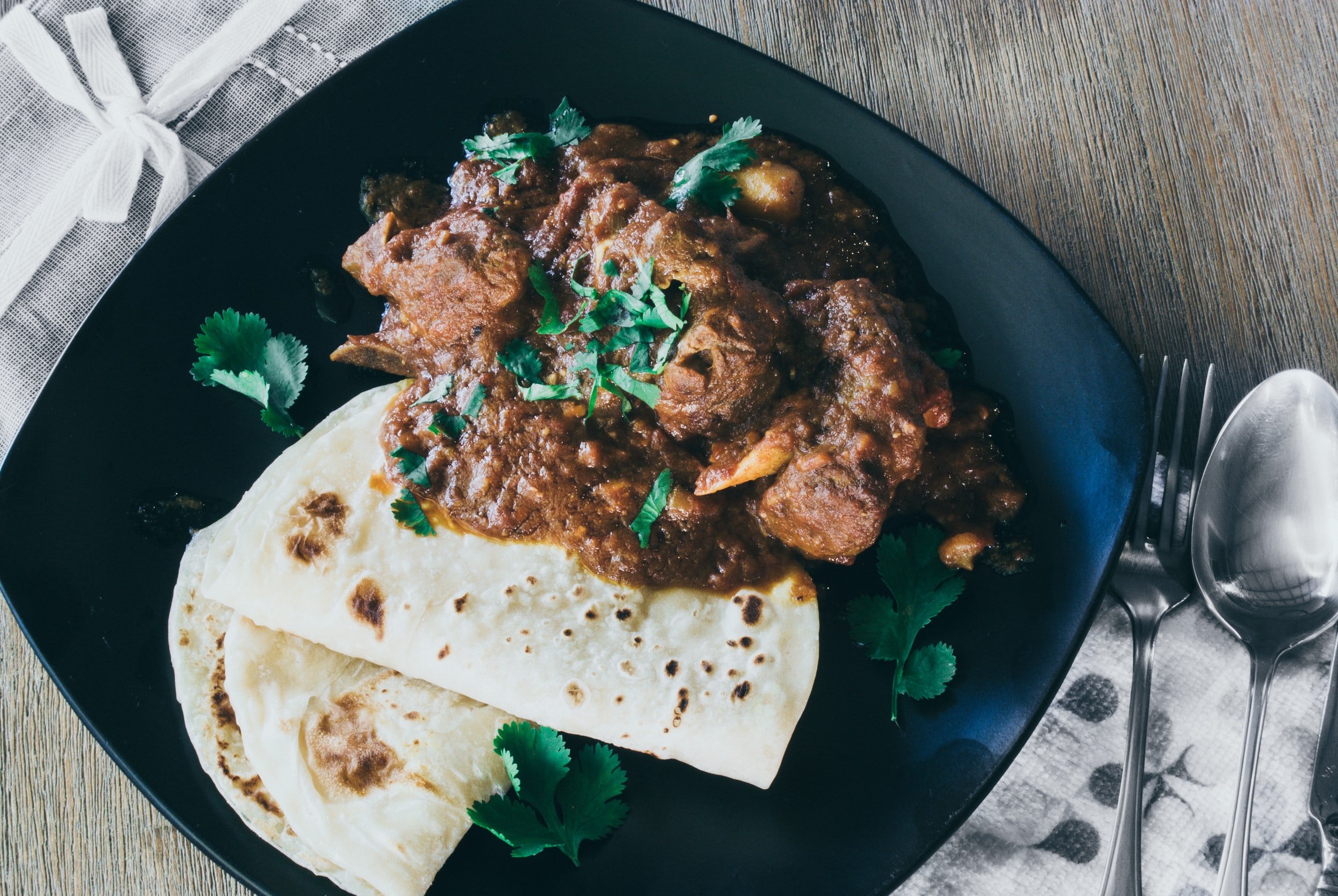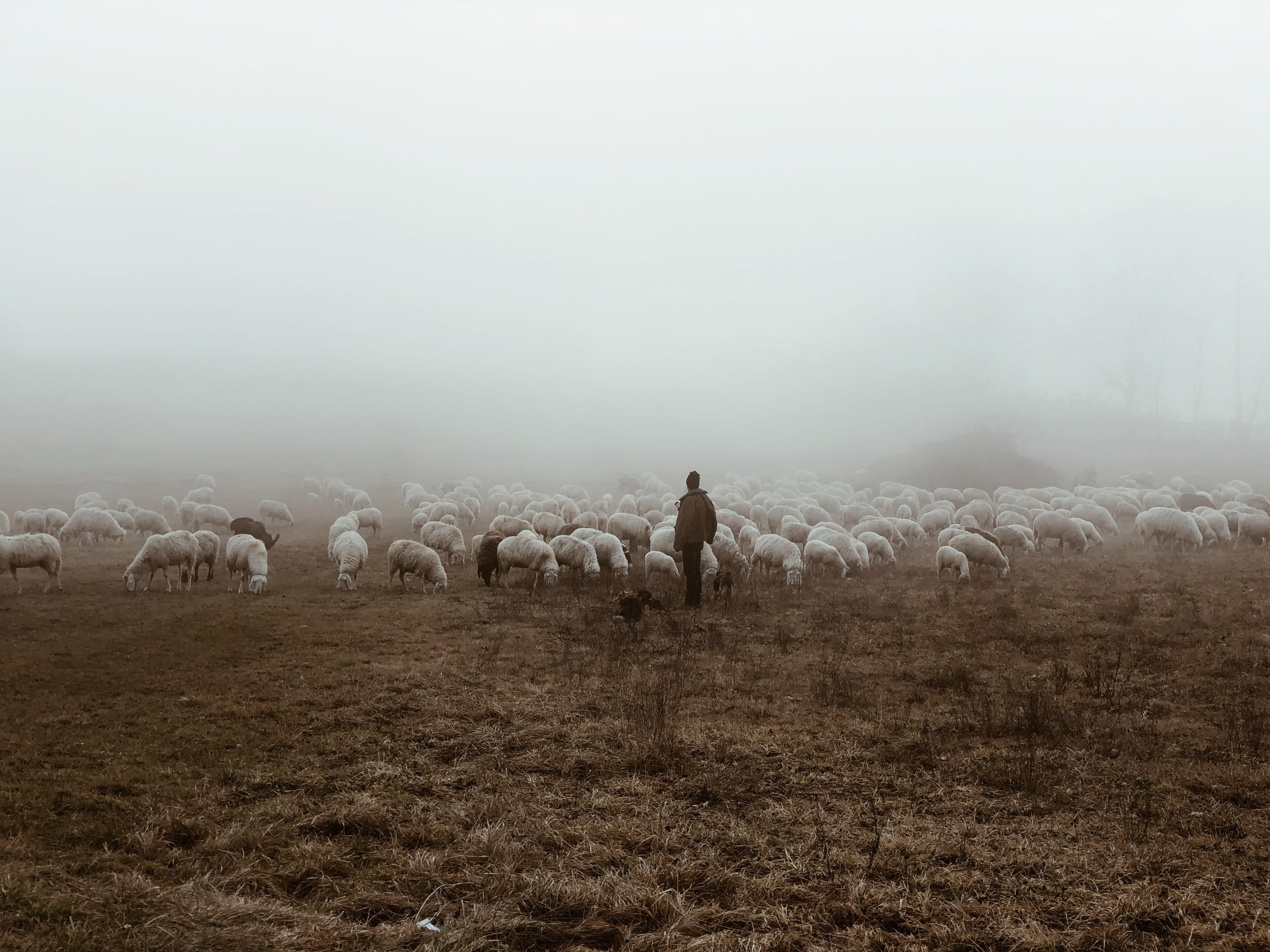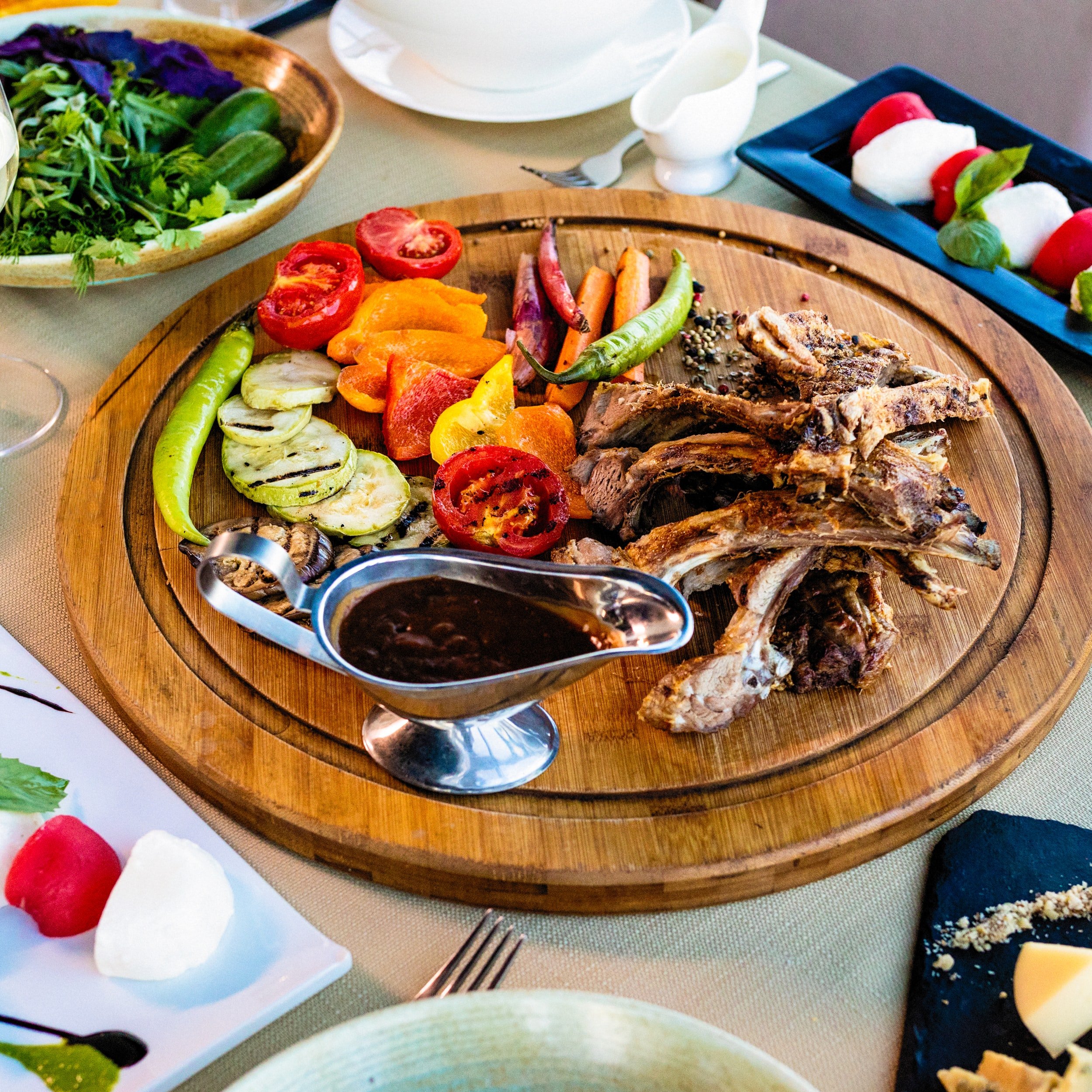What is Mutton?
With the varieties of meat available on the market today, you might be wondering why mutton isn’t more readily available in some locations. Or maybe you’re curious about the difference between mutton and lamb. We’ve got you covered all the way around.
Mutton is the meat that comes from mature sheep between the ages of 2 and 5 years old. This kind of sheep meat is known for being tougher and gamier than lamb. However, many techniques can be used in the kitchen for turning this mean into a tender delicacy.
We will discuss the differences between lamb and mutton as well as the defining characteristics of mutton. We’ll also cover how to cook mutton and explore some of the more popular recipes that use this meat.
**J&R Pierce Family Farm is a participant in the Amazon Services LLC Associates Program, an affiliate advertising program designed to allow sites to earn advertising fees by linking to products on Amazon. I often link to Amazon when recommending certain products, and if you choose to purchase, I may earn a small percentage of the sale. It costs you nothing extra, and all recommended products are ones that I personally vouch for. **
What Kind of Meat is Mutton?
Many features of mutton set it apart from other cuts of meat. These include:
Cut from a sheep that is one year or older
Tough
This kind of sheep meat tends to be a bit more fatty compared to other cuts, like lamb chops
It is somewhat gamey, like goat meat
Stores like any other meat
Cheaper than lamb
This kind of sheep meat is meant to be cooked slowly and over low heat, rather than seared or fried
Flavor changes with the type of grass the animal fed on
Must be tenderized before cooking (even if it is going to be cooked slowly)
This kind of sheep meat is a great alternative for those who don’t eat beef or pork
Get more information in the video below:
What Does Mutton Taste Like?
Because mutton comes from older sheep, it has more muscles and fat than lamb. Overall, it is a fattier meat that relies heavily on slow roasting.
Making ground meat out of mutton is another great option.
This lends it a strong gamey flavor that is reminiscent of wild boar, venison, and goat, along with other type of red meat options. The flavor is strong and rich but mellows with cooking.
Is Mutton a Goat or Sheep?
Mutton is the meat of older sheep, not goats, that have aged between two and five years of age. However, in India, the term goat meat is fully interchangeable with sheep and mutton. This is not the case in Europe and the United States.
Goat meat is the meat of the domestic goat (Capra aegagrus hircus). It is often stewed or slow roasted.
In some parts of the world, goat meat is commonly used in sausages. Ground goat meat is also used in burgers and meatballs.
Goat meat is leaner and has less saturated fat than other types of red meat. It is also a good source of protein, iron, and zinc.
Goat meat is popular in many countries, including India, Nepal, Ethiopia, and Somalia. It is also quite popular in the Middle East (as is the case with most sheep meat as well).
In the United States, goat meat is not as popular as mutton chops or loin chops from spring lamb, but it is beginning to gain more popularity as people become more adventurous with their culinary choices.
Goat meat has a strong, gamey flavor that some people compare to lamb chops or mutton but even more so. It can be cooked in many different ways, including grilling, roasting, and stewing. goat meat is a good choice for those who are looking for a leaner alternative to red meat.
Lamb vs. Mutton - What is the Difference?
While they come from the same animal, there are plenty of differences between lamb and mutton. They are definitely nowhere near the same cut of meat.
Age
The primary difference between the two cuts of meat is the age of the animals they are sourced from. Lamb is meat taken from a young sheep that is no more than one year old while mutton comes from a more mature sheep between the ages of two and five years old.
Preparation
Lamb is a tender cut of meat that works well with a variety of cooking methods, including braising, grilling, and roasting. The best way to keep the lamb meat juicy is to prevent it from reaching well-done status.
Temperature
The officially recommended cooking temperature for lamb steaks is 145°F; however, most people prefer their lamb cooked like beef steaks to a medium-rare temperature, which means not exceeding 130 to 135°F.
However, if pink meat isn’t palatable to you, you can continue to cook your lamb to a medium temperature but experts agree that it should not be cooked much longer than that as it will dry out the expensive cut of meat, ruining dinner.
For ground lamb, you will still want to follow the safety rules of reaching an internal temperature of 160 to 165°F.
Extra Prepwork
On the other hand, mutton is inherently tougher than lamb and requires extra preparation to make it tender. One method is to cut it into tender slices. You will need to find the muscle fibers and cut across them, not with them, to make the meat softer.
You can also use a meat tenderizer.
This method is great for breaking up tough proteins. It also allows for the tenderizing marinades to more easily enter the meat.
Marinades
Another technique is to use a great marinade. You’ll want to marinate the meat for a minimum of 2 - 3 hours but 6 -7 hours is ideal.
The acids in a good marinade will break down the collagen that holds the fiber muscles together, allowing the meat to become tender. Additionally, the marinade adds moisture, which will make the meat juicy when it cooks.
Braising or Slow Cooking Mutton
You also want to make sure you use the appropriate cooking method for mutton. This is slow-cooked meat. Braising or slow cooking the meat at a low temperature for more than three hours will help soften it.
It is an effective method for breaking down tough fibers, connective tissues, and collagen. Your mutton will be extremely tender.
One final suggestion is to salt your mutton. If you don’t want to marinade it, you have the option to thoroughly salt it and let it rest for one to two hours.
This will effectively break down the muscle fibers and tenderize the meat. All you’ll have to do is rinse off the salt and start cooking.
Flavor and Texture
Most of the time lamb is grass-fed, which lends it a flavor often referred to as gamey or even robust. However, the flavor is mild and can be described as grassy. The flavor originates from the branched-chain fatty acids (BCFAs) found in the lamb’s fat.
While some breeds naturally have more BCFAs in their fat, the content is heavily influenced by the animal’s diet. For example, lamb from New Zealand and Australia is typically grass-fed and contains a high level of BCFAs in their fat.
On the other hand, lamb raised in the United States is frequently grain-fed and has lower levels of BCFAs. This leads to a richer and slightly sweeter flavor in the meat.
Lamb comes from young sheep, meaning it hasn’t had a lot of time to develop. Its connective tissues and muscles are not as defined as adult sheep, giving it a tender, moist texture.
Mutton has a much stronger flavor and is comparable to other game meats such as wild boar and venison. This is because it comes from older sheep that have had more time to develop muscles and fat than the younger sheep that produce lamb.
The flavor can be altered while cooking with the correct spices but is generally an acquired taste.
Because of the increased muscle and fat content, mutton has the potential to be dry, chewy, and tough. You will have to use special preparation techniques for mutton to counteract these characteristics.
Which Sheep Breeds are Best for Producing Mutton?
With so many sheep breeds available, you might be wondering which are the best for producing mutton. These breeds are all high performers and are very hardy.
Dorper
The Dorper sheep is a breed that is excellent for producing mutton. It was created as a crossbreed between the Dorset Horn and the Blackheaded Persian to be hardy for the climate of South Africa. However, it does quite well in cold climates as well.
These sheep can mate all year long and have an extremely fast growth rate, which is common for meat-producing sheep.
Native to southern England, the Hampshire sheep is another quality mutton sheep due to its large, muscular frame. This breed matures early and grows rapidly. Often used to enhance other sheep breeds, it’s also quite hardy.
Shetland
Shetland sheep originate from Scotland and are well-known for their high-quality mutton meat. The meat is famous for its fine texture and lean status as this breed doesn’t store its fat exclusively around its muscles but more around its organs.
Suffolk
Suffolk sheep have a large stature that makes them excellent mutton producers. Their meat is renowned for its higher muscle and protein combination, providing it with a higher nutritional value than most meats. These sheep also have a rapid growth rate.
Dorset Horn
While Dorset Horn sheep were most well-known for their horns historically, they became desired for their high-quality mutton. They can also produce multiple lambs per year as their reproductive cycle is year-round, making them an excellent choice for meat production.
German Mutton Merino
The German Mutton Merino is another excellent choice for a mutton sheep. It is highly adaptable and can adjust to any climate. With a non-seasonal breeding cycle, it can breed up to 3 times in 2 years.
This breed features a medium frame that has well-developed meat shapes.
Mecheri
The Mecheri sheep is native to India and is a medium-sized breed. They are single lamb-producing sheep. Both sexes are polled and their bodies are covered with short hair that is not shorn.
How to Cook Mutton
When cooking mutton, it is important to start with a high-quality cut of meat. Fresh mutton will have a good bit of white-colored fat and be quite dark.
You’ll want to ensure that you marinate the meat, taking care to marinate the larger pieces longer as this meat is slow to soak up the liquid. The marinade, once allowed to soak all the way through the meat, will be able to mask the gamey flavor that many people dislike.
Seasoning mutton is another important step in the cooking process. Proper spices can complement the meat's natural flavor, making it more palatable. Because it has a strong flavor, it needs strong seasonings like garlic, mint, capers, or olives.
You will need to avoid cooking mutton for a long time at a high temperature. It is best cooked low and slow. High and fast will only result in tough, dried-out meat that no one wants to eat.
A great option for cooking well-done mutton is preparing it in a stew, ideally in a slow cooker. This will allow it to cook slowly and add juices to the meat. Those who want their meat medium or rare can be seared on the stove or grill or cooked in the oven.
Best Mutton Recipes
With so many options available for recipes, we evaluated several of them and came up with the best ones for you to try.
Beryani is a traditional Iranian dish that consists of mutton, sheep lungs, tail fat, saffron, cinnamon, onions, pistachios, walnuts, almonds, salt, pepper, and mint. Once the mutton is prepared it is usually served on sangak bread and accompanied by the minced sheep lungs.
Nasi goreng kambing is traditional fried rice that originates from Malaysia. It’s also widely popular in Singapore and Indonesia.
It’s typically made with a combination of minced mutton, rice, garlic, carrots, shallots, ginger, cucumbers, chili peppers, lime leaves, curry leaves, oil, fish sauce, shrimp paste, turmeric, cinnamon, cumin, coriander, tomatoes, eggs, vinegar, eggs, salt, and sugar.
Muslim mutton curry is a recipe that features perfectly cooked mutton with all the right spices. Mutton is frequently used as an alternative to chicken during Muslim festivals. Fried onions and yogurt are used to make the gravy in the dish.
West Indian curried mutton is a great option for slow cooking your mutton. Its cinnamon, allspice, and cloves pair well with the robust flavor of the meat. Overall the dish is very easy to prepare and comes together nicely with all the compatible flavors.
Sri Lankan mutton rolls are the way to go if you want finger food. These tasty treats combine mutton with potatoes, mint leaves, and green chilies all in a breadcrumb coating.
The Lancashire mutton hotpot offers diners the traditional flavor combination of mutton and kidney. This dish is rich in flavor and very easy to prepare. It pairs well with pickled red cabbage and steamed greens.
Final Thoughts
Mutton is a different cut of meat from lamb, though this may be surprising since they essentially come from the same animal. Since it is derived from an adult sheep, it has the potential to be tougher and gamier, making it less palatable for many.
Characteristics like age, preparation, flavor, and texture set lamb and mutton apart into two distinct groups. With lamb inherently being tender meat, and mutton having to be specially prepared to become tender, it’s no wonder people have traditionally chosen lamb over mutton.
Although I, too, prefer lamb (particularly the tender cuts of grass fed lamb that is slow cooked), I don't mind mutton, either. Although lamb meat is my go to choice for its delicate flavor, fine texture, and tender taste, I also don't mind cooking up some mutton every now and then.
Give mutton a try - there are plenty of ways to eat this popular meat regardless of the animal's age!
If you’re new to raising sheep, be sure to check out this essential sheep maintenance chart to help you stay on top of everything, from lambing to butchering.
Oh - and let me know your favorite mutton preparation tips in the comments - I’d love some more recipes to try.
Want to learn more about farming? Be sure to check out these featured articles!
Subscribe to our email newsletter for regular tips and tricks on homesteading – wherever you are. You can also follow us on Instagram (@jrpiercefamilyfarm) and Pinterest (J&R Pierce Family Farm) for frequent updates. Happy homesteading!









